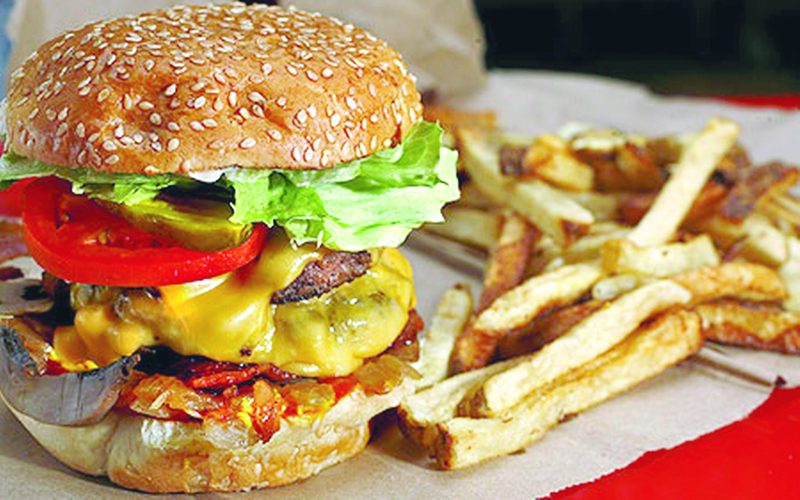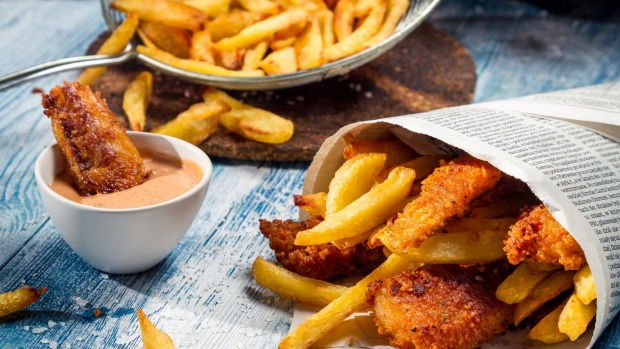
High levels of blood fats can damage your blood vessels. The most infamous blood fat–cholesterol— is the one in question. If your cholesterol level is too high, you need to bring it down by changing your eating and exercise habits. The simplest rule of thumb is to eat less saturated fat. (those that are solid at room temperature). If you can’t lower your blood fat level by diet alone, your doctor may prescribe medication to help.
The main strategy for reducing saturated fat is to eat a well-balanced diet. The American Heart Association suggests that total daily fat intake should be less than 30 percent of total calories. Specifically, saturated fats should be only 8 to 10 percent of total calories, polyunsaturated fats should be 10 percent of total calories and monounsaturated fats should be about 15 percent of total calories. The Food Guide Pyramid is a useful tool for monitoring daily food intake. There are also a number of tips that may be helpful, which are described in this article.
Researchers from The Netherlands found that snacking on high-fat and high-sugar foods was independently associated with abdominal fat and fatty liver (hepatic steatosis). According to the studypublished in Hepatology(9 May 2014), a journal of the American Association for the Study of Liver Diseases, hypercaloric diet with frequent meals increases intrahepatic triglyceride content (IHTG) and fat around the waist, but increasing meal size did not.
Listed below are some high-fat foods:
- Coconut oil and palm oil. These “tropical oils” are very high in saturated fat.
- Hydrogenated or partially hydrogenated oils. Avoid purchasing “junk foods” that use hydrogenated or partially hydrogenated oils, or trans fats (“trans”). These junk foods include doughnuts and French fries.
- Whole fat milk or dairy products (e.g., cheeses). People are encouraged to gradually switch from whole fat dairy products, to 2 percent, to 1 percent to skim. There are skim-milk versions of most cheeses available on the market. Also, non-dairy creamers contain saturated fats and could be gradually replaced with skim milk.
- Fat substitutes. Some fat, particularly essential fatty acids, is necessary for good health and some fat substitutes have noticeable and negative side effects. In addition, studies have shown that choosing a lower calorie fat substitute may actually lead people to consume larger amounts of a given food.
- Fatty side dishes or beverages, especially when eating eggs. Up to an egg a day is not necessarily unhealthy for non-diabetics, according to a 1999 study from the Journal of the American Medical Association. Eating eggs was associated, however, with the intake of other high-risk foods (e.g., bacon) and beverages (e.g., whole milk).
- Fatty sauces (e.g., alfredo sauce) or gravies. Fatty sauces often contain high-fat cream and butter, and gravies often contain animal fat.
- Butter. Butter is high in saturated fat, calories and cholesterol, but has no nutritional value.
- High-fat microwave pizzas, popcorn or other snacks.

Here are some low-fat substitutes for high-fat products :
- Fiber. Fiber is filling, but without the calories associated with fats.
- Margarines, particularly those that contain minimal trans fats. Because softer typically means less saturated, the softest margarines are the most desirable. When baking, one cup of margarine or 2/3 cup of vegetable oil may be substituted for one cup of butter.
- Evaporated skim milk. When cooking or baking, one cup of evaporated skim milk may be substituted for one cup of heavy cream.
- Cocoa powder. When baking, three tablespoons of cocoa powder dissolved in one tablespoon of vegetable oil may be substituted for one ounce of unsweetened chocolate.
- Ricotta. Part-skim ricotta cheese may be substituted in recipes that call for cream cheese (e.g., a cheesecake).
- Mustard. Use plain or Dijon mustard instead of mayonnaise or other fatty sandwich spreads.
- Yogurt. Non-fat frozen yogurt may be substituted for ice cream, and is also available without sugar. Furthermore, yogurt can be substituted for high-fat sour cream when making dips and toppings.
- Poultry products. Both traditional (e.g., chicken and turkey) and non-traditional (e.g., emu or ostrich) poultry are lower-fat, lower-cholesterol alternatives to beef. Seafood is also a healthy substitute for fatty red meat, but only if it is not drowned in cocktail sauce, butter and so forth.
- No-salt seasonings. Fat is not necessary for flavor. No-salt seasonings such as dill or basil can add flavor without fat. Garlic has also been shown to be helpful to heart health.
- Egg whites. Either 2 egg whites or 1/4 cup of cholesterol-free egg substitute can be used instead of a whole egg.
- Fruit and angel cake. A fresh fruit salad, with or without angel cake, can be substituted as a sweet dessert instead of high-fat desserts.
But be careful. Although reducing dietary fat is important, eliminating all fat from your diet is not at all healthy. Fat is an essential nutrient that produces energy for daily activities and supplies the body with vitamins A, D and E, which are needed for healthy skin and optimal growth. The body cannot produce fat on its own; it must be provided through dietary intake. For these reasons you should enjoy some fats in your diet, especially monounsaturated fats like olive oil. The key is moderation–not elimination.
For an exhaustive list of Low-Calorie, Lower-Fat Alternative Foods click here.
Log on to http://www.womenfitness.net/programs/wtmngmnt/contents.htm to learn about Healthy Choices While Eating Out, Words to be watched in a restaurant & words indicating low Fat Choices. These tips will help you in better Management of Your Daily Fat Intake